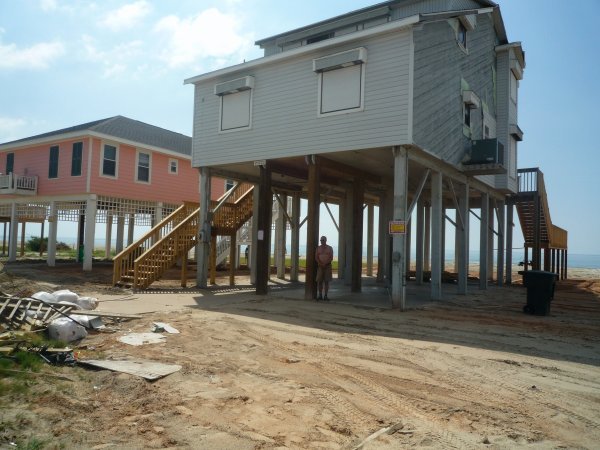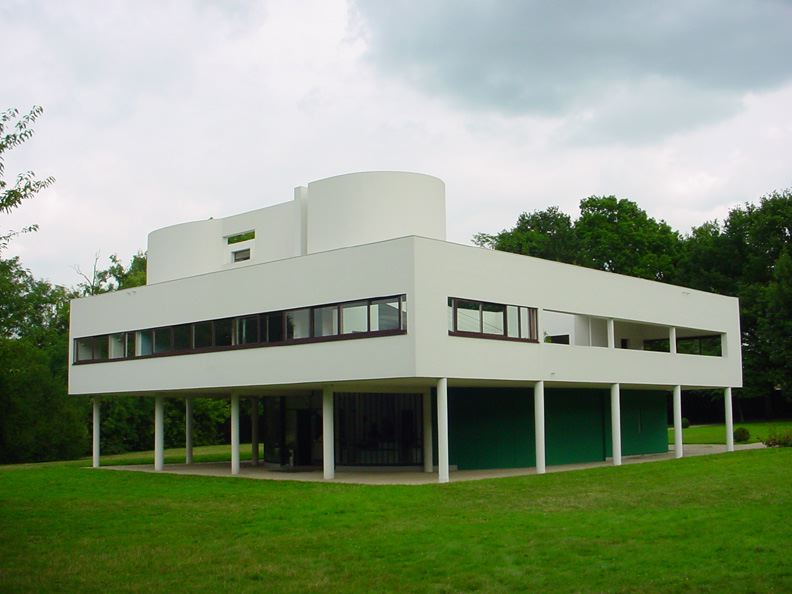Pilotis
Pilotis are supports that lift a building above the ground or a body of water. They are similar in nature to to stilts, piers, columns, pillars, posts and so on.
In timber form, they were traditionally used in the vernacular architecture of Asia and Scandinavia, or wherever indigenous peoples lived at a water’s edge. They may also be used in hurricane or flood-prone areas, to raise the structure above storm surge levels.
Pilotis are commonly arranged in a regular grid pattern. By providing simple points of support, they ensure that the structure has a minimal impact on the terrain. However, they can also be used in combination with the surrounding landscape, such as trees or rock formations.
The pioneer of modern pilotis was the architect Le Corbusier, who used them both functionally as ground-level supporting columns, and philosophically as a tool for freeing the rigidity of traditional plan layouts, enabling efficient, buildings as 'machines for living'.
His use of pilotis is best-known in Villa Savoye (below), where the architectural volume is lifted, allowing a space for circulation underneath, and giving the building the appearance of lightness and floating above the landscape. Le Corbusier used a variety of pilotis in his buildings, from slender posts to the massive Brutalist forms of the Marseilles Housing Unit.
[edit] Related articles on Designing Buildings Wiki
Featured articles and news
RTPI leader to become new CIOB Chief Executive Officer
Dr Victoria Hills MRTPI, FICE to take over after Caroline Gumble’s departure.
Social and affordable housing, a long term plan for delivery
The “Delivering a Decade of Renewal for Social and Affordable Housing” strategy sets out future path.
A change to adoptive architecture
Effects of global weather warming on architectural detailing, material choice and human interaction.
The proposed publicly owned and backed subsidiary of Homes England, to facilitate new homes.
How big is the problem and what can we do to mitigate the effects?
Overheating guidance and tools for building designers
A number of cool guides to help with the heat.
The UK's Modern Industrial Strategy: A 10 year plan
Previous consultation criticism, current key elements and general support with some persisting reservations.
Building Safety Regulator reforms
New roles, new staff and a new fast track service pave the way for a single construction regulator.
Architectural Technologist CPDs and Communications
CIAT CPD… and how you can do it!
Cooling centres and cool spaces
Managing extreme heat in cities by directing the public to places for heat stress relief and water sources.
Winter gardens: A brief history and warm variations
Extending the season with glass in different forms and terms.
Restoring Great Yarmouth's Winter Gardens
Transforming one of the least sustainable constructions imaginable.
Construction Skills Mission Board launch sector drive
Newly formed government and industry collaboration set strategy for recruiting an additional 100,000 construction workers a year.
New Architects Code comes into effect in September 2025
ARB Architects Code of Conduct and Practice available with ongoing consultation regarding guidance.
Welsh Skills Body (Medr) launches ambitious plan
The new skills body brings together funding and regulation of tertiary education and research for the devolved nation.
Paul Gandy FCIOB announced as next CIOB President
Former Tilbury Douglas CEO takes helm.
UK Infrastructure: A 10 Year Strategy. In brief with reactions
With the National Infrastructure and Service Transformation Authority (NISTA).
























